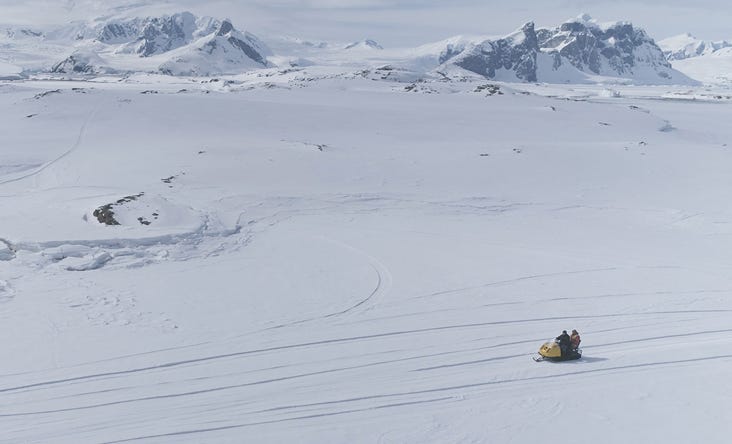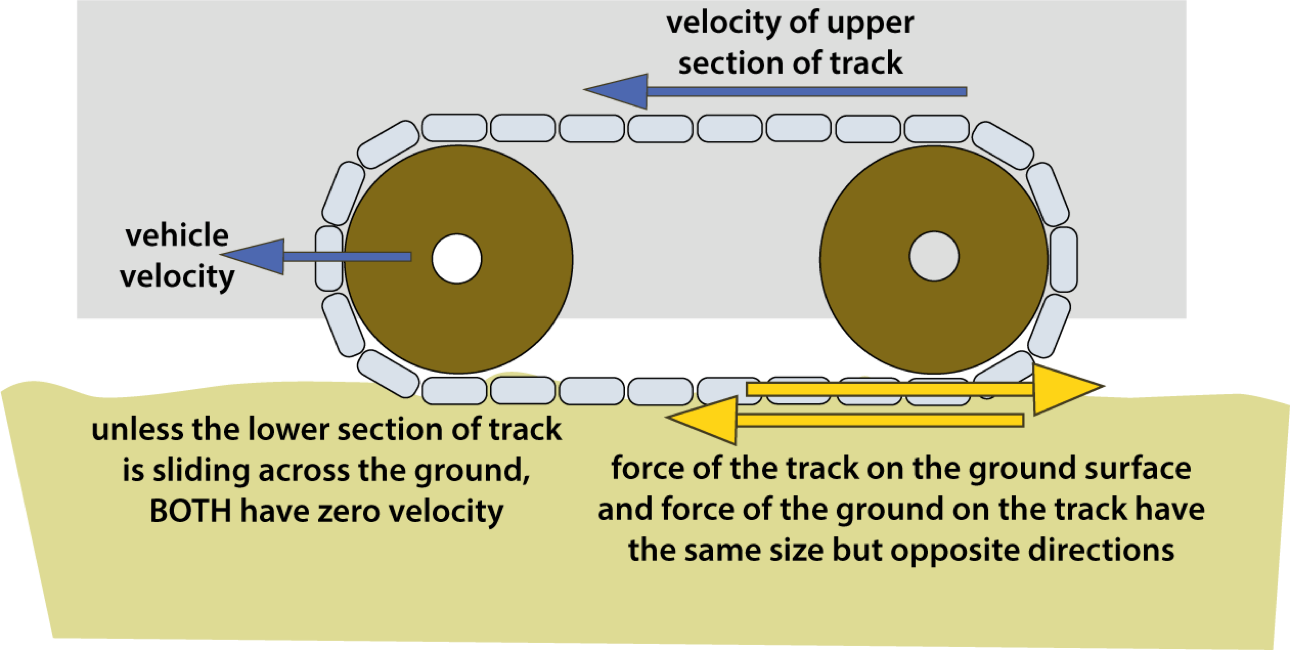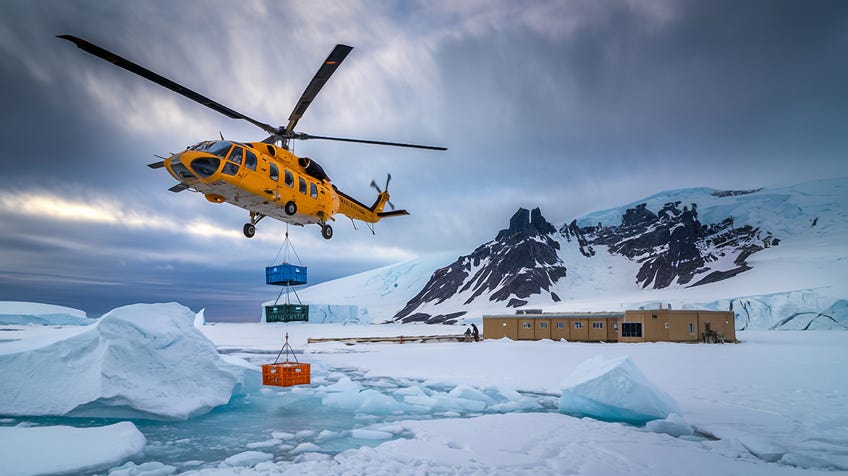
Connecting pre-university students with professional science
Contextual Curriculum Connections
A2 Newton’s third law
in the context of snowmobile travel

Travel out into ‘the field’ can be by snowmobile.
These are small tracked vehicles.
The track works much like your foot when you walk. It pushes on the ground, backwards, but doesn’t slide.
In both cases, the ground reacts and pushes forward.
A snowmobile also has skis at the front, just for steering.

The grey block represents the vehicle.
A snowmobile mechanic and instructor at McMurdo Station explains her work.
A PhD researcher of the seals that live on the sea ice describes the equipment
Newton’s Third Law:
When two objects interact they exert equal and opposite forces on each other.
This is sometimes stated as:
For every action (force) there is an equal and opposite reaction (force).
This applies to snowmobiles, people, swimming (or waddling) penguins, jet planes and rockets. (It’s one of nature’s ‘laws’.)
It applies even to objects falling under gravity, including a human body. The force of attraction between a large body (such as a planet) and a smaller one (a person) is mutual. The smaller body attracts the larger one with a force equal and opposite to their weight (but a very much larger object is much less affected).

Rotors are the helicopter’s ‘wings’. They push air downwards, and experience an equal-sized upwards force that allows the machine, and its load, to fly.
Are there any modes of transport or kinds of animal motion that defy Newton’s third law?
(C) David Brodie 2025 Note that all external videos and websites remain copyright of the creators
